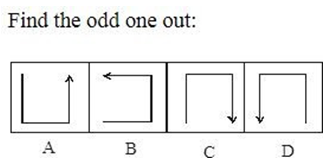Question
In the event of non-supply of food grains, how the
Government compensate the beneficiaries under the NFSA? Passage on ONORC (for next 4 Qs) Every fifth family in India is still unaware about the benefits of the portability facility provided by the ‘One Nation, One Ration Card’ (ONORC) scheme, considered to be key to the success of the public distribution system (PDS). This is according to a recent study by social impact advisory group, Dalberg. The study was conducted in Andhra Pradesh, Jharkhand, Karnataka, Rajasthan and Uttar Pradesh, covering 6,700 low-income households and 1,500 PDS dealers. These states have a 40 per cent share in the PDS and were the first to adopt ONORC. The study said ONORC was specifically designed to benefit migrants. However, marginalised women have not able to benefit much from it, especially in matters of availing food grains. The study also noted that the facility of inter-state portability for food security and that of selecting a fair price ration shop (FPS) of one’s choice was being availed by 58 per cent of migrant workers. The study, conducted in collaboration with the Omidyar Network India, said technical failure of FPS and fear of stocks running out have been found to be the main reasons behind ONORC transaction failures. Government orders to provide rations have been given even after transactions failed. Most PDS dealers are unaware of what steps should be taken on such occasions.Solution
National Food Security Act The Act provides for food and nutritional security in the human life cycle approach, by ensuring access to an adequate quantity of quality food at affordable prices for people to live a life with dignity and for matters connected therewith or incidental thereto. Salient Features of the NFSA The major features of the Act are described below:
- Coverage: The state-wise coverage was determined by the NITI Aayog based on the 2011-12 Household Consumption Expenditure survey of NSSO.
- The Act legally entitled up to 75% of the rural population and 50% of the urban population to receive subsidized foodgrains under the Targeted Public Distribution System (TPDS).
- About two-thirds of the population, therefore, is covered under the Act to receive highly subsidized foodgrains.
- The food grains would be provided at highly subsidized prices under the Public Distribution System.
- The Act ensures nutritional support to women and children. Pregnant and lactating women would be entitled to nutritious meals, free of charge under the MDM and ICDS schemes.
- Children in the age group of 6-14 years would also be entitled to free nutritious meals under the MDM and ICDS schemes.
- Maternity benefit of not less than Rs.6000 is also provided to pregnant women and lactating mothers.
- The Act also empowers women by identifying the eldest woman of the household as the head of the household to issue ration cards.
Select the one which is different from the other three responses.

Statement: A 16-year-old boy drowned in a lake when he went for a swim along with his friends.
Courses of actions:
I. Coaching for Swi...
In each problem, out of the four figures marked (1) (2) (3) and (4), three are similar in a certain manner. However, one figure is not like the other t...
(A) Calm: Windy
(B) Happy: Sane
(C) Extravagant: Thrifty
(D) Limited: Boundless
Select the one which is different from the other three responses.
In each of the following questions select the one which is different from the other three responses.
From among the given alternatives select the one in which the set of numbers is most like the set of numbers given in the question.
(5, 9, 17)
Number of letter skipped between adjacent letters in the series decreased by one. Find out the series that is in this sequence?
Choose the figure which is different from the rest.


